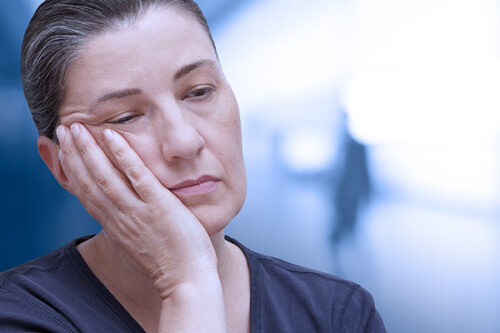How to Treat Osteoporosis
Excess amounts of proteins (especially of animal proteins) cause changes in kidney activity, resulting in large losses of calcium from the body. Experimental studies show that protein levels commonly consumed by Americans (90 grams and more–15% of the calories) will cause more calcium to be lost from the body than can be absorbed from the gut, even when the person is consuming very high levels of calcium. This is why populations around the world that eat rich diets loaded with animal proteins (as in the USA, England, Israel, Finland, Sweden etc.) have high rates of osteoporosis, while people in countries who consume small amounts of animal proteins (including dairy foods), such as those living in Asian and African countries, have strong bones and little osteoporosis.
An African woman can have 10 babies, nurse each of them for 10 months and still be expected to have good solid bones when she reaches the age of 70, bones which are comparable to those of a 20 year old woman in America. Eskimos, who daily consume 250 to 400 grams of proteins in fish, walrus, or whale meats and 2,200 mg of calcium from fish bone, have the highest incidence of osteoporosis of any population in the world. And proof of the Eskimos’ affliction with “thin bones” can be found in bodies that are centuries old. Two women, about 20 and 40 years old when they died, were buried in an ice flow in the Arctic more than 500 years ago. Recently their well-preserved frozen bodies were discovered and autopsied. The examination showed that both women had suffered from extensive atherosclerosis and osteoporosis.
Current Treatment:
The only way to have more calcium entering the body than is leaving it is to eat foods low in protein content (especially those low in animal proteins). Exercise of all kinds has also been shown to strengthen bones. Good news! This is a reversible disease.
Recommendations
+-Eat a low-protein diet, avoid caffeine and phosphate containing sodas and exercise daily.
For more details, read McDougall’s Medicine–A Challenging Second Opinion. This book challenges the currently accepted treatments for the most commonly diagnosed diseases. Learn why medical care is ineffective for cancer, osteoporosis, heart disease, diabetes, hypertension, arthritis, kidney disease and more. Patients should not only refuse ineffective treatments, but they should pursue real solutions provided by changes in their diet and lifestyle.
References
+-Stevenson, J. Dietary intake of calcium and postmenopausal bone loss. Br Med J 297:15, 1988
Kanis, J. Calcium supplementation of the diet–I & II. Not justified by present evidence. Br Med J 298:137 & 205, 1989
Breslau, N. Relationship of animal protein-rich diet to kidney stone formation and calcium metabolism. J Clin Endocrinol Metab 66:140, 1988
Marsh, A. Vegetarian lifestyle and bone mineral density. Am J Clin Nutr 43(3 suppl):837, 1988
Bush, T. The adverse effects of hormonal therapy. Cardiol Clin 4:145, 1986
Bergkvist, L. The risk of breast cancer after estrogen and estrogen-progestin replacement. N Engl J Med 321:293, 1989
Recommended Articles

Common Health Problems: Fatigue

Alzheimer's Disease Can Be Safely Prevented and Treated Now







